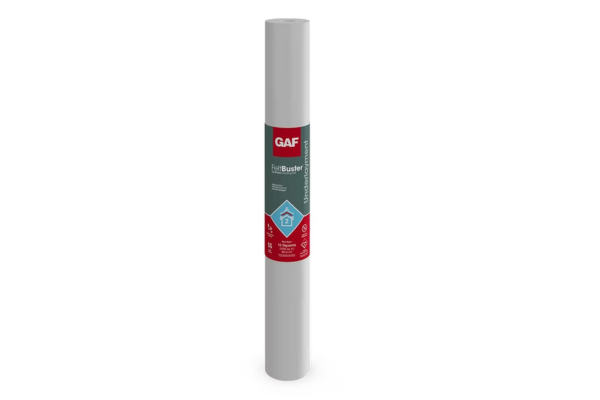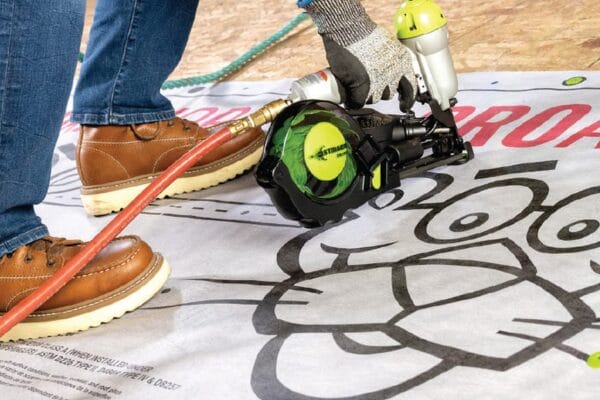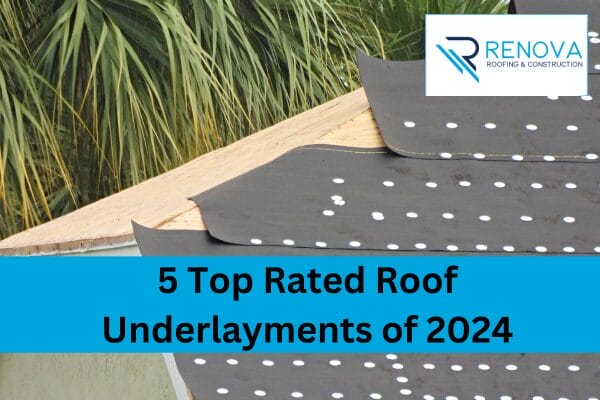Whether you’re an experienced contractor or a homeowner who wants to take on DIY roofing projects, choosing the right underlayment is critical for ensuring your roof’s durability and protection from weather elements. This seemingly invisible component plays a crucial role in preventing damaging moisture and leaks.
In this article, we’ll delve into the best roof underlayment options. We’ll explore the various types and materials available on the market and share our top picks of 2024. The underlayments we selected provide the best possible protection for your home. So, get ready to make an informed decision that will strengthen your residence for several years to come!
Types of Roof Underlayment: An In-Depth Comparison
Choosing the right type of roofing underlayment is crucial for ensuring the longevity and durability of your roofing system. With a variety of materials available, understanding the differences can help you make an informed decision. Here’s a detailed comparison between three popular types of roof underlayment to guide your choice.
1. Asphalt-Saturated Felt
Asphalt-saturated felt, also known as tar paper, is a traditional option for roof underlayment. It consists of paper or fiberglass mats soaked in asphalt, creating a waterproof layer. This underlayment is known for its reliability and affordability. However, its water resistance may vary depending on its weight, usually #15 or #30 felt. While heavier felt provides better tear resistance and durability, it is less flexible than the lighter options.
2. Synthetic Underlayment
Advancements in roofing technology have led to the development of synthetic underlayment, which is made from polypropylene or polyethylene. Compared to traditional felt products, synthetic underlayment is superior in terms of strength and longevity.
It offers enhanced water resistance, is lightweight, which makes it easier to handle and install, and is more resistant to UV degradation if exposed during construction delays. Additionally, many synthetic underlayment products come with added features such as non-skid surfaces, making installation safer.
3. Rubberized Asphalt Underlayment
Rubberized asphalt underlayment is a type of high-end roofing material that provides premium protection against extreme weather conditions. It is made by combining asphalt with rubber polymers, which not only ensures waterproofing but also offers self-sealing properties around nails and fasteners. This is an important feature, especially in areas that are prone to wind-driven rain and ice dams.
Although rubberized asphalt underlayment is more expensive than other types of roofing underlayment, its increased performance capabilities, such as thermal stability and flexibility, make it a great investment. Its prolonged life expectancy and resilience make it an exceptional value for its price.
Top Picks For Roof Underlayment of 2024
Selecting the right underlayment is crucial for ensuring the longevity and effectiveness of your roofing system. Let’s dive into some of the standout options available this year.
1. FeltBuster® Synthetic Roofing Felt by GAF
First on our list is FeltBuster Synthetic Roofing Felt, manufactured by GAF. This product stands out due to its strength and durability, making it an ideal choice in areas prone to harsh weather conditions. Its synthetic makeup prevents it from absorbing moisture that traditionally leads to the breakdown of organic felts. Homeowners will appreciate its lighter weight compared to traditional felt, facilitating easier and faster installation processes.

2. RoofRunner® by CertainTeed
Next up is RoofRunner, a versatile and lightweight underlayment that works exceptionally well across various types of roofs. Thanks to technological advancements in manufacturing, RoofRunner offers enhanced leak protection, which substantially increases the reliability of your roof during extreme weather events. Notably, it balances performance with affordability — perfect for those seeking effective solutions within reasonable budget constraints.

3. Grace Ice & Water Shield® Roofing Underlayment by GCP
The Grace Ice & Water Shield takes protection against water damage to another level. This underlayment is specifically tailored for battling ice dams and wind-driven rain, which is crucial in colder climates. The self-adhering membrane ensures a tight seal around nails, effectively preventing leaks at highly vulnerable spots on the roof.
4. ProArmor® Synthetic Roof Underlayment by Owens Corning
ProArmor by Owens Corning offers exceptional strength, durability, and slip resistance — features that enhance roofer safety during installations while providing long-lasting coverage. It’s crafted using 100% synthetic material, fortified further by heat-resistant properties that ensure performance.

5. Tyvek® Protec™ 120 by DuPont
Last on our list is Tyvek® Protec™ 120. Renowned for its robust engineering, this option goes above and beyond to provide impact resistance alongside superior waterproofing capabilities. Ideal for steep-slope applications, its unique design provides excellent traction for installers – decreasing risks associated with roof work.

Critical Factors to Consider When Choosing the Best Roof Underlayment
When selecting the best underlayment for roofing, various crucial aspects come into play. These include compatibility with your roof type, adaptability to certain weather conditions, durability, installation specifics, and cost efficiency. Let’s delve deeper into each of these factors to ensure you make an informed decision that aligns with both your needs and budget.
1. Roof Type Compatibility
The first thing to consider is whether the underlayment is suitable for your specific roof type. Different materials, such as tiles, shingles, metal panels, or wood shakes, have unique requirements. For instance, synthetic underlayments are generally preferred for metal roofs due to their resistance to condensation.
2. Climate and Weather Conditions
Your local climate plays a pivotal role in choosing the right underlayment. Areas prone to severe weather conditions like heavy rainfalls or high winds require a more robust solution, such as rubberized asphalt underlayment. This material offers excellent waterproofing capabilities and superior adhesion which helps safeguard against leaks during storms.
3. Durability and Life Expectancy
Everyone wants a product that stands the test of time. Durability affects not just performance over the years but also overall maintenance costs. Opting for highly durable products might be initially pricey but often prove more economical in the long run.
4. Installation Process and Requirements
Ease of installation is another critical factor since it directly influences labor costs and project completion timeframes. Products like Tyvek Protec 120 are popular due to their user-friendly nature, which allows for faster installations—substantially lowering project durations and potentially reducing labor charges.
5. Cost Analysis: Value vs. Performance
Finally, balancing cost-effectiveness with high performance can be tricky. Understanding your initial investment versus ongoing savings is vital, as less expensive options may have lower lifespans and require more frequent replacements.
By carefully evaluating these aspects when picking the best roof underlayment for your home in 2024, you’ll be well-equipped to maximize both functional and financial benefits—an integrated approach ensuring long-term satisfaction and resilience against elemental challenges.
Final Thoughts
When it comes to safeguarding your home against environmental factors, choosing the right roof underlayment matters, whether you value affordability or optimal protection, there are a variety of options available to suit your specific needs. Each product listed here has been tested and proven to deliver exceptional results when properly installed on different housing structures.
No matter which option you choose, you can rest assured that you are investing in a lasting and reliable roofing solution that will protect your home for years to come.
Contact Professional Roofers In Mississippi For Your Roof Installation
Now that you know the best roof underlayments on the market in 2024, you can decide which one is right for your roof. If you are planning to install a new roof or replace the existing one, contact the professional roofers at Renova Roofing & Construction in Mississippi.
We are a team of expert roofers serving Mississippi and the Gulf Coast. Whether you want to install a new roof or need a complete roof replacement, we have got you covered. Contact us today at (601) 647-3433 to consult a roofing professional.

